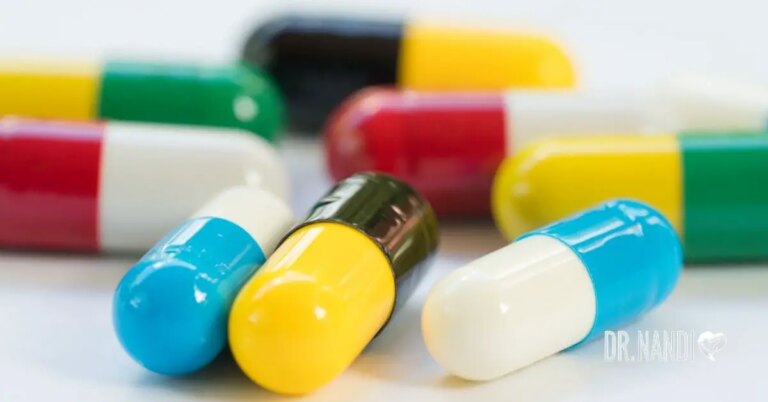Did you know that farmed salmon is considered one of the most toxic foods in the world? Nicolas Daniel’s documentary “Fillet Oh! Fish” provides a compelling look into the dark side of the fish industry, exposing the environmental pollution, diseases, and genetic mutations associated with salmon farming. It’s a disturbing reality that demands our attention. Despite this, salmon, when sourced responsibly, can provide a myriad of health benefits. Learn more about the health benefits of salmon.
According to a recent scientific study, farmed salmon contains a shocking amount of toxins, making it five times more toxic than any other food product tested [1]. This alarming statistic raises concerns about the safety of consuming farmed salmon and highlights the need for greater awareness about the potential dangers lurking within the fish industry. As an alternative, there are numerous recipes that use salmon in a healthier context, such as Dr. Nandi’s salmon potato pancakes.
The documentary takes us to Norway, where the chemicals used in fish farms are causing significant damage to the environment. Salmon farms are situated in open water, resulting in the unrestricted spread of pollution. Beneath these farms, a layer of waste, teeming with bacteria, drugs, and pesticides, destroys the seafloor and contaminates the surrounding ecosystem. One can opt for healthier options like the teriyaki salmon with zucchini, a dish that champions both taste and nutritional benefits, as long as the salmon is responsibly sourced.
Overcrowded conditions in fish farms lead to the rapid spread of diseases among stressed salmon. Sea lice, Pancreas Disease (PD), and Infectious Salmon Anemia Virus (ISA) have become rampant across Norway, posing significant threats to the fish population and human health [2]. Shockingly, consumers are often uninformed about these fish pandemics, as diseased fish continue to be sold.
To combat disease-causing pests, fish farmers use dangerous pesticides, some of which have neurotoxic effects. These pesticides, along with other pollutants, accumulate in farmed salmon, making it one of the most toxic foods available [3]. Toxicology researcher Jerome Ruzzin confirms the high levels of toxins in farmed salmon and has personally stopped consuming it due to health concerns.

Genetic Mutations: Disturbing Abnormalities in Farmed Salmon
In addition to environmental pollution and diseases, farmed salmon also suffer from genetic mutations and abnormalities. The film showcases deformed cod resulting from genetic mutations caused by fish farming practices. Approximately 50% of farmed cod exhibit deformities, which can spread to wild cod through mating, further contaminating the natural population.
Farmed salmon exhibit less visible but equally disturbing mutations. The flesh of farmed salmon is unusually “brittle” and prone to breaking apart when bent, a highly abnormal characteristic. Moreover, the nutritional content of farmed salmon differs significantly from wild salmon. Farmed salmon contains significantly higher fat content, ranging from 14.5 to 34 percent, compared to wild salmon’s 5 to 7 percent.
Toxic Feed: A Silent Culprit
While pesticides and pollutants play a role in the toxicity of farmed salmon, the primary source of toxic exposure is the fish feed itself. Dry pellet feed, commonly used in fish farming, contains pollutants such as dioxins, PCBs, and various drugs and chemicals. These contaminants find their way into the fish, ultimately affecting the health of those who consume them.
The fish feed used in Norwegian fish farms consists of eel and fatty fish from the polluted Baltic Sea, which acts as a reservoir for various toxic substances. This contamination occurs because the Baltic Sea receives toxic waste from nine industrialized countries surrounding its shores. Consequently, herring, eel, and salmon from the Baltic Sea accumulate higher levels of pollutants, including dioxins.
Another alarming discovery is the use of ethoxyquin, a chemical originally designed for fruits and vegetables, in fish feed. Fish feed manufacturers add ethoxyquin to prevent the fats from oxidizing, but its effects on human health have never been established. Surprisingly, while the European Union regulates ethoxyquin levels in other foods, no such regulations exist for fish consumed by humans.
Conflicting Opinions and Official Statements
Unsurprisingly, conflicting opinions arise when it comes to the safety of farmed salmon. The Norwegian Seafood Council maintains that farmed salmon is safe and healthy, emphasizing its nutritional benefits and the lack of established upper limits for ethoxyquin in fish. However, critics argue that vested interests and lack of scientific investigation into the effects of ethoxyquin on human health raise doubts about these claims.
Preventative Measures and Identifying Symptoms
To protect yourself from the potential dangers of farmed salmon and make informed choices, it’s crucial to be aware of the following preventive measures and symptoms:
Identifying Symptoms:
- Stay informed about fish-related diseases and fish pandemics.
- Be aware of potential symptoms related to toxin exposure, such as gastrointestinal issues, obesity, diabetes, and abnormal organ function.
- Consult a healthcare professional if you experience unexplained symptoms or concerns after consuming farmed salmon or other fish products.
- Healthier Alternatives to Farmed Salmon
Fortunately, there are healthier alternatives to farmed salmon that allow you to enjoy the benefits of consuming fish without compromising your well-being. Consider the following options:
- Wild Alaskan Salmon: Authentic, wild-caught Alaskan sockeye salmon is a nutritious choice with reduced contamination risks. Its short life cycle and minimal exposure to other contaminated fish make it a safer option.
- Sardines and Anchovies: Smaller fish with shorter life cycles, such as sardines and anchovies, are excellent alternatives. They have lower fat content and accumulate fewer toxins due to their position at the bottom of the food chain.
- Herring and Fish Roe (Caviar): These options provide essential nutrients and nourish mitochondrial membranes, promoting overall health.
By choosing these alternatives, you can still enjoy the benefits of consuming fish while minimizing your exposure to toxins and pollutants.

My Personal RX:
- Be cautious of the source of fish and its potential for contamination.
- Educate yourself about the risks associated with farmed salmon and the fish industry.
- Support sustainable fishing practices and responsible aquaculture.
- Take a daily Liver Support Supplement to keep your natural detoxification system humming, along with a fiber supplement to help facilitate the removal of toxins.
- Download a free copy of my Superfoods cookbook.
Making Informed Choices for a Healthier Future
The truth about farmed salmon is alarming and demands our attention. The fish industry’s environmental pollution, diseases, and genetic mutations pose significant risks to human health. While conflicting opinions exist, scientific studies and empirical evidence support the notion that farmed salmon is one of the most toxic foods in the world.
To protect yourself and make informed choices, be aware of the potential dangers associated with farmed salmon and the fish industry. Consider healthier alternatives, such as wild Alaskan salmon, sardines, and anchovies, which offer nutritional benefits with reduced contamination risks.
It’s time to prioritize the health and well-being of ourselves and our planet. By supporting sustainable fishing practices, demanding transparency from the fish industry, and making conscious choices, we can create a safer and healthier future.

References:
[1] Upside Distribution. (n.d.). Filet Oh! Fish – In the Troubled Waters of the Fish Industry. Retrieved from http://www.upsidedistribution.com/flyer/upside150_FiletOhFish_flyer.pdf
[2] Merck Animal Health. (2015). Pancreas Disease. Retrieved from http://www.eishken.at/eishken/wp-content/uploads/2018/06/regarding-the-documentary-filet-oh-fish.pdf




















